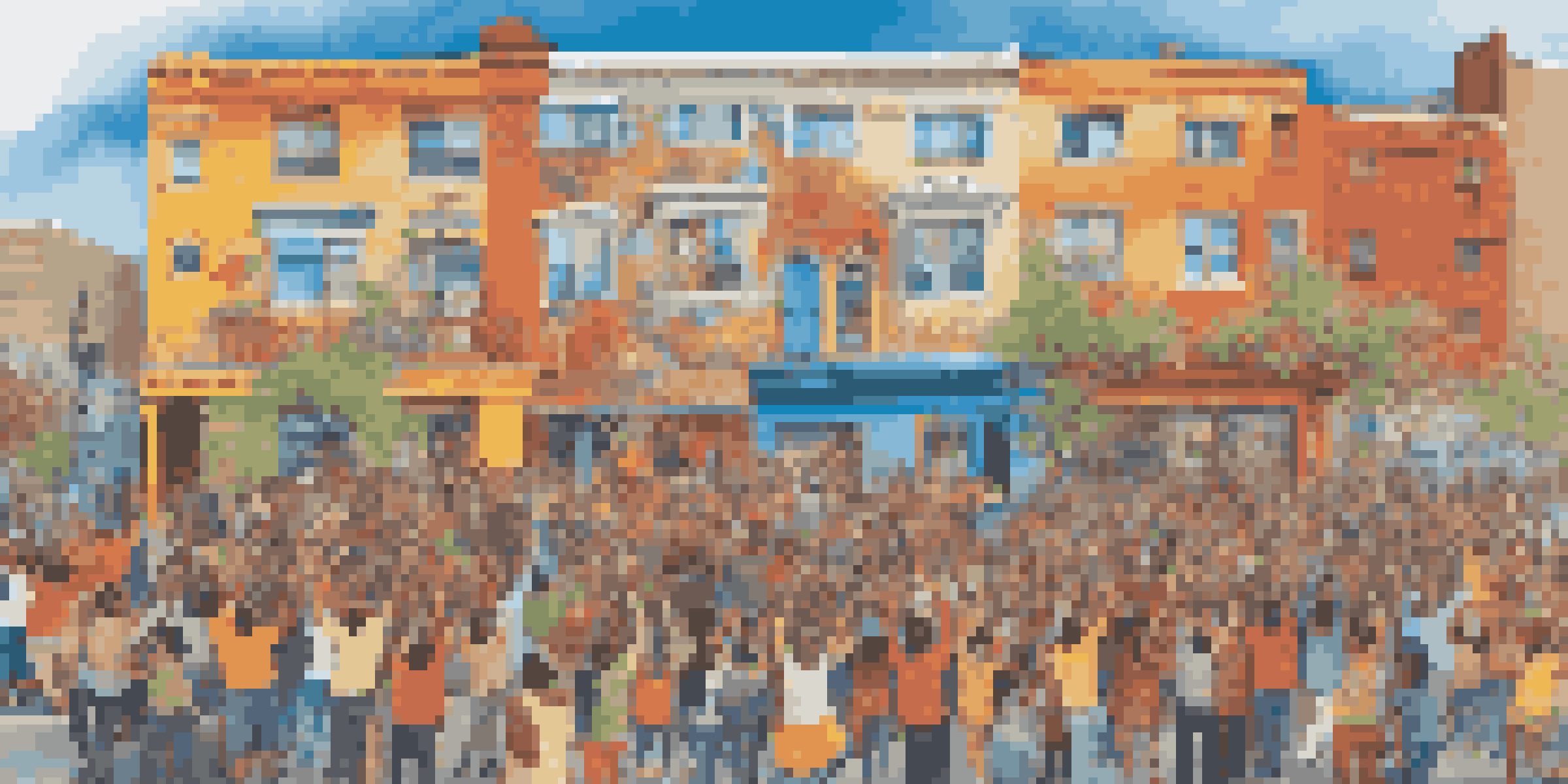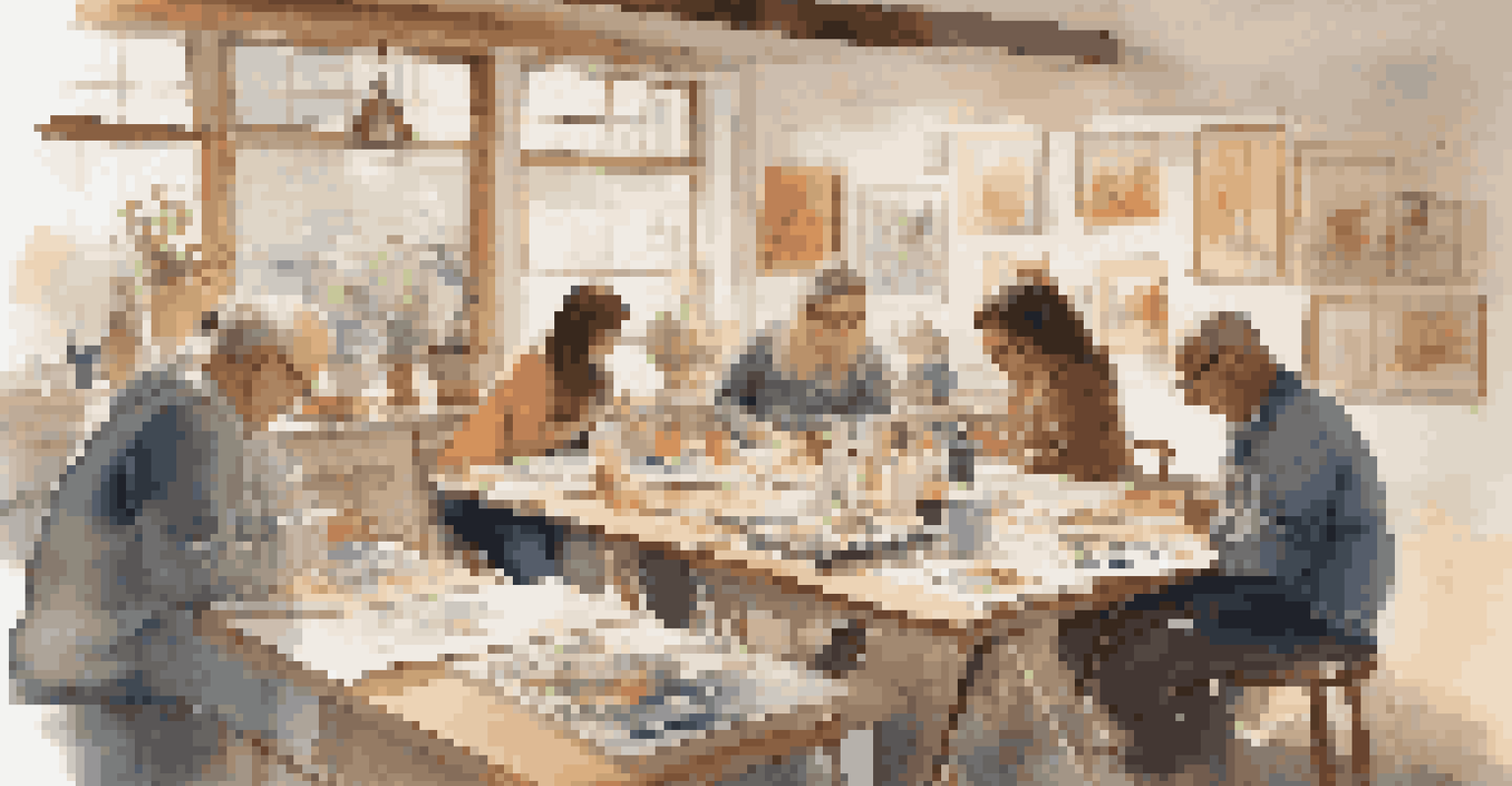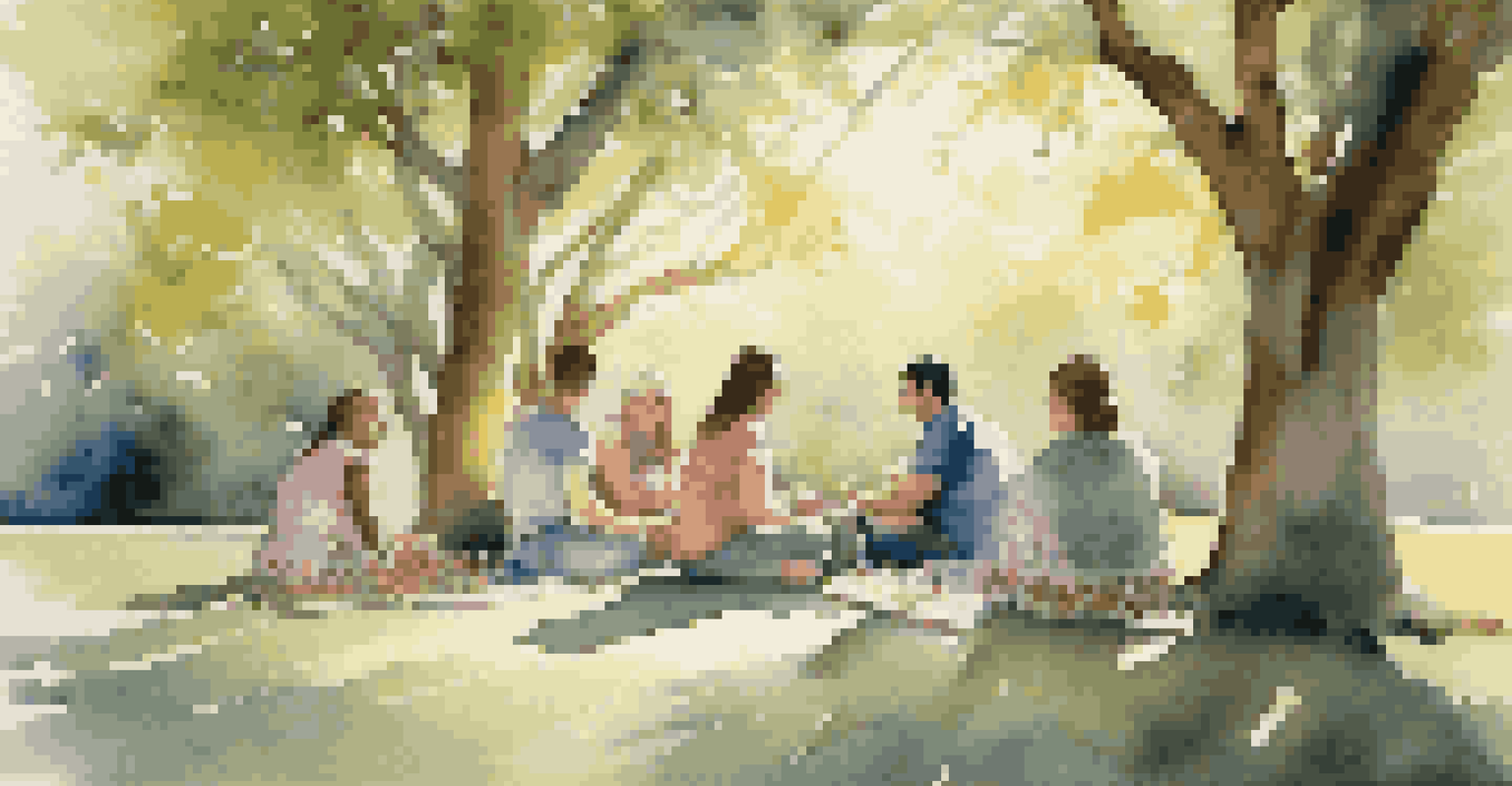Creative Collaboration: Collective Art for Personal Transformation

Understanding Creative Collaboration in Art
Creative collaboration in art refers to the process where individuals come together to create something unique. This synergy often leads to unexpected and beautiful outcomes, as different perspectives and skills blend into a single project. When artists collaborate, they not only share their talents but also their stories, experiences, and insights, enriching the artwork and the process itself.
Alone we can do so little; together we can do so much.
Think of it like a potluck dinner where everyone brings a dish. Each contribution adds a new flavor to the meal, making it more delightful and diverse. Similarly, collaborative art projects create a tapestry of ideas and emotions, showcasing the strengths of each participant while fostering community.
This form of collaboration can take many shapes, from mural painting with community members to group installations in galleries. The key is that it not only celebrates individual creativity but also emphasizes the power of togetherness, opening doors to personal transformation through shared experiences.
The Role of Collective Art in Personal Transformation
Collective art can be a powerful catalyst for personal transformation, allowing individuals to explore their identities and emotions in a supportive environment. When people engage in shared creative processes, they often confront their fears, insecurities, and aspirations together. This can lead to breakthroughs that might not occur in solitary practice.

For instance, participating in a community art project can help someone heal from past trauma or express feelings they've struggled to articulate. The act of creating alongside others fosters vulnerability and trust, creating a safe space for personal exploration.
Creative Collaboration Enhances Art
When artists come together, their diverse skills and perspectives create unique and enriching artwork.
Moreover, the feedback and encouragement from peers can boost self-esteem and inspire confidence. Through this collective journey, individuals often discover not just their artistic voice but also a deeper understanding of themselves and their place within the community.
Building Community Through Collaborative Art
One of the most rewarding aspects of creative collaboration is its ability to forge connections and build community. When people come together for a common purpose, they share not only their creative talents but also their backgrounds, experiences, and cultures. This exchange fosters understanding and empathy among participants.
Creativity is contagious, pass it on.
Consider a local mural project where artists and residents collaborate to depict their neighborhood's history and aspirations. As they work side by side, participants share stories, laugh together, and develop bonds that transcend their differences. These interactions can lead to lasting friendships and a sense of belonging.
Ultimately, collective art projects can strengthen community ties, making neighborhoods more vibrant and inclusive. Participants often leave with not just a sense of accomplishment, but also a renewed appreciation for their fellow creators and their shared environment.
Creative Processes: Techniques for Collaboration
When embarking on a collaborative art project, it's essential to establish a creative process that encourages everyone to contribute. Techniques such as brainstorming sessions, group critiques, and collaborative workshops can help participants feel invested in the project. Creating an open atmosphere where ideas are welcomed can spark innovation and creativity.
For example, using techniques like 'round-robin drawing' allows each participant to build upon the previous person's work, fostering a sense of ownership and collaboration. This method not only encourages creativity but also emphasizes the importance of teamwork in the artistic process.
Collective Art Fosters Personal Growth
Engaging in shared creative processes allows individuals to explore their identities and emotions in a supportive environment.
By adopting flexible approaches and embracing spontaneity, artists can create a dynamic environment where everyone feels empowered to express their ideas. This not only enhances the artwork but also deepens the connections among participants.
The Emotional Benefits of Collaborative Art
Engaging in collaborative art can have significant emotional benefits for participants, such as reducing stress and anxiety. The act of creating in a group setting often promotes mindfulness, allowing individuals to focus on the present moment while sharing their creativity. This can lead to a sense of calm and fulfillment.
Moreover, the shared experience of creating art can strengthen emotional bonds among participants, fostering a sense of camaraderie. When people work together towards a common goal, they experience a unique form of connection that can alleviate feelings of loneliness and isolation.
As individuals express themselves creatively alongside others, they also develop emotional resilience. The supportive atmosphere of collaborative art encourages vulnerability, helping participants learn to navigate their feelings and build emotional intelligence.
Challenges in Creative Collaboration
While collaborative art can be immensely rewarding, it also comes with its set of challenges. For instance, differing artistic visions or styles can lead to conflicts within the group. It’s crucial to address these differences early on and find common ground to ensure everyone feels valued and heard.
Communication is key in overcoming these hurdles. Establishing clear expectations and encouraging open dialogue among participants can help mitigate misunderstandings and foster a more harmonious creative environment. Regular check-ins can also ensure that everyone remains aligned and engaged in the project.
Collaboration Builds Strong Communities
Working together on art projects strengthens community ties and fosters understanding among participants.
Additionally, the willingness to compromise and adapt is essential in collaborative art. Embracing the idea that the final piece may look different from one's initial vision can lead to unexpected beauty and innovation, ultimately enhancing the collaborative experience.
Moving Forward: Embracing Collective Art for Growth
As we explore the transformative power of creative collaboration, it's essential to embrace this approach in our personal and community lives. Collective art not only nurtures individual growth but also strengthens community bonds and fosters a sense of belonging. By participating in collaborative projects, we open ourselves up to new experiences and perspectives.
Consider looking for local workshops, art classes, or community projects where you can get involved. Engaging with others through art can lead to connections that enrich your life and inspire personal transformation. You might be surprised by the insights and friendships that emerge from these shared experiences.

In conclusion, creative collaboration in art serves as a beautiful reminder of the strength found in unity. By coming together to create, we not only craft art but also cultivate understanding, empathy, and personal growth, making the world a little brighter, one brushstroke at a time.